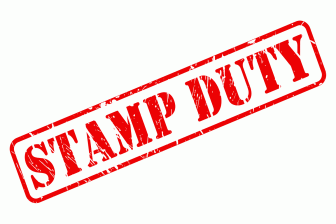 The surcharge for stamp duty land tax (SDLT) which non-UK residents must pay to buy a home in England and Ireland should be doubled, according to the National Association of Property Buyers (NAPB).
The surcharge for stamp duty land tax (SDLT) which non-UK residents must pay to buy a home in England and Ireland should be doubled, according to the National Association of Property Buyers (NAPB).
Under existing rules, foreign buyers must pay a 2% surcharge and up to an additional 5% if the property is not going to be their main home.
However, the NAPB believe ministers should hike the surcharge to 4% to help “level up” the market.
Their suggestion comes as latest figures show almost 250,000 homes in the UK are now owned by overseas nationals. In the current market, that is £90.7bn worth of property, suggesting that the UK remains a safe haven for foreign homeowners.
On a regional basis, London is home to the highest value of foreign owned homes, with the 85,451 properties belonging to overseas homeowners equating to a total value of £45.3bn.
Westminster ranks top, with foreign owned homes commanding a current market value of £11.8bn, while in Kensington and Chelsea this total sits at £10.7bn.
Tower Hamlets ranks third, although some way off the top two, with overseas homeowners sitting on £3.7bn worth of property, followed by Wandsworth (£3.3bn) and Camden (£3.2bn).
Outside of the capital, Buckinghamshire is home to the highest value of foreign owned homes at £31.1bn, while Tandridge (£1.6bn), Liverpool (£1.4bn), Salford (£1.1bn) and Manchester (£1.1bn) also make the top 20 list.
NAPB spokesman Jonathan Rolande said: “Right now it is not a level playing field – foreign buyers must pay a 2% surcharge of Stamp Duty and up to an additional 5% if the property is not to be a main home.
“However, to many wealthy foreign buyers based in high income and low tax locations, this does not, in reality, appear to serve as much of a disincentive.
“In fact, the brief but significant collapse in sterling after the mini-Budget was a huge discount for foreign buyers.
“If buying at £500,000 in January ’22 versus January ’23, a US, Hong Kong or Saudi based buyer would have saved £50,000 making the minor decreases in UK property prices irrelevant.
“With the UK property supply crisis really acute this makes the matter of coming up with ways of helping UK citizens all the more urgent.”
Explaining the reasoning behind the SDLT rise, Rolande continued: “My feeling is that there is scope to increase the SDLT from 2% to say 4% – this would potentially discourage buyers and level the playing field further. Even if it did not do that it would bring in additional funds for the Treasury which, either way, is not a bad thing. It could impact prices at the very top end of the market too in London especially and many would see that as a price worth paying.”
Underlining the need to strike a balanced approach he added: “We obviously need to handle this matter carefully. Preventing foreign purchasers, or even forcing them to sell property already owned would send a shockwave through the economy and severely damage the UK market. It should also be considered whether that would be fair as 400,000 UK citizens own property abroad.
“But foreign ownership is reducing available stock in the sales and rental sector and pushing up prices. And, if other inequalities in housing are not addressed, this will continue to be a pressing issue for many. Right now we need to think bigger in terms of our ideas around housing and how to generate supply for those who still want to enter the market.”


Comments are closed.